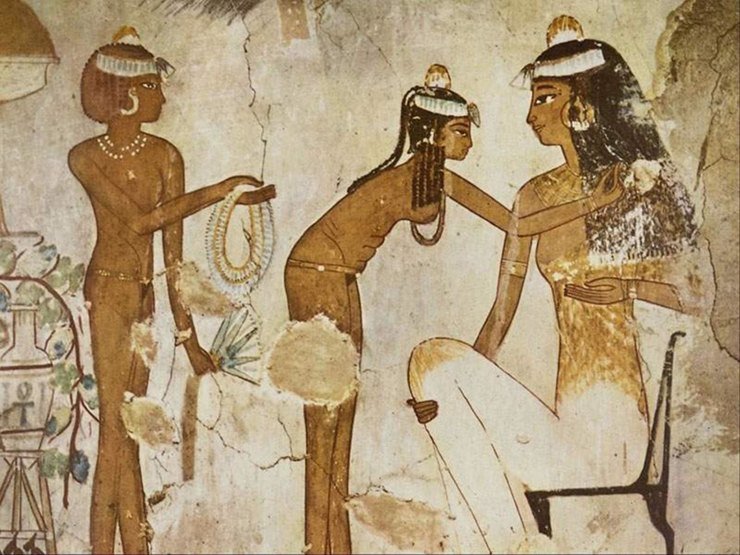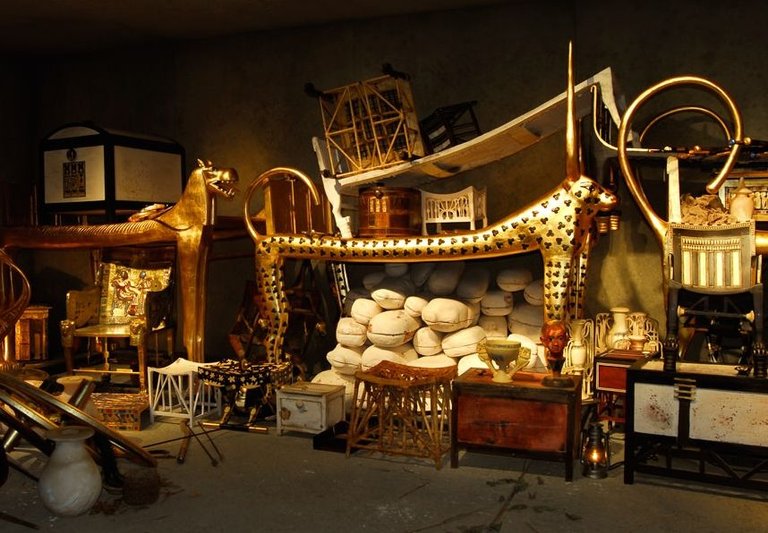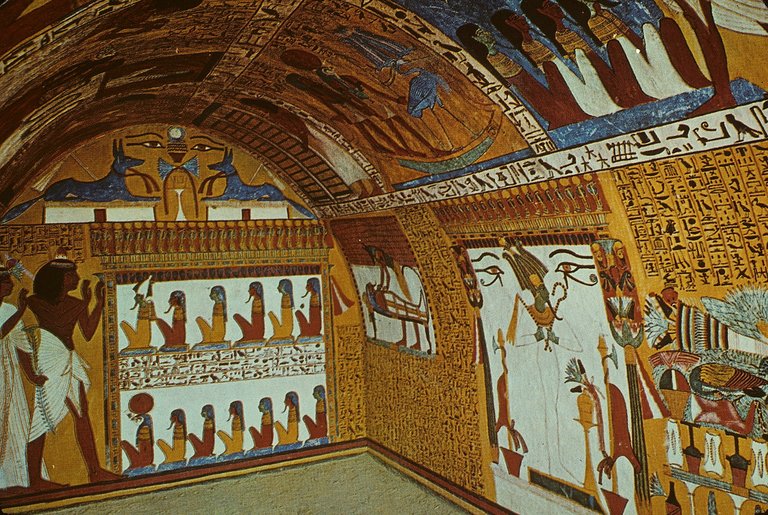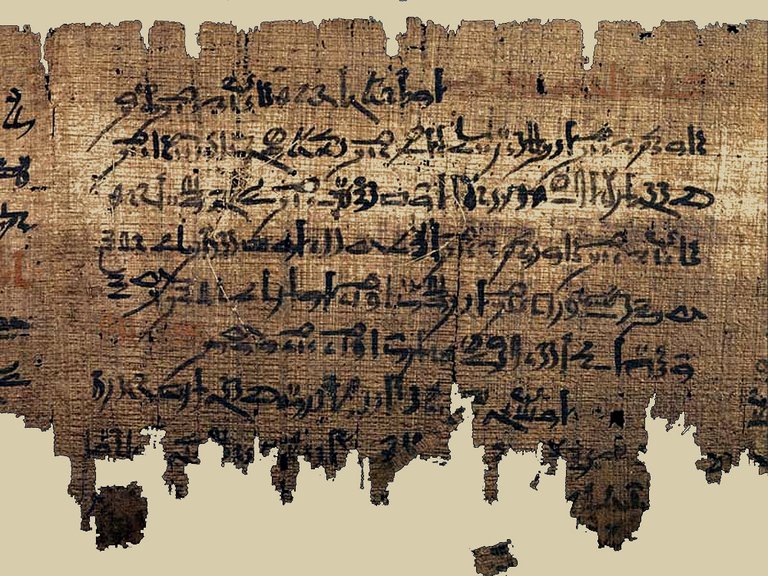A series of posts about Ancient Egypt will not be completed without a story about the most important thing. Without them, there will be nothing, of what we can think of these days. They are ordinary people. There is no doubt that the provision of services in the family is the main source of income for many women, slaves and Egyptian wage earners. However, drawings in the tombs of the rich and the people of the royal family envision maids serving dishes for feasts or combing the hair of a mistress. In fact, the ruling class relied heavily on the workers in its economy by placing in their burial chambers statues of the servants who serve them in the Hereafter. But even lower-status families can afford at least one server, a "server for everything", you can pay for products or goods, or simply bought a slave.

This treatment is known to be part of papyrus, a protocol litigation in a local court in West Taiba, presumably in the year 15 or 16 of Ramses. A woman named Erinovret, the wife of an official in the Simut region, bought a young Syrian slave from a trafficker. Sure, bargaining, price agreement, which paid Irinofret in kind: linen clothes, quilt, which produced, and other household items, a set of copper and bronze ware. But immediately after the deal ended, one of Irina's neighbors, a woman named Bekhmut, lodged a complaint with the court. She, not Erenoffret was the owner of some goods paid for the slave. So she demanded her share of the girl's services. In confirmation of her statement, she and her husband presented influential witnesses: "sergeant to the police"
Before the witnesses testified, Chief Judge Irenovret ordered an official statement of his innocence. "I swear by our Lord, I say this: if the witnesses will point out against me that any of Ms. Bacmott's property was among my payment for this slave, I hid, and I will get 100 strokes and also lose her." Erenofrite, recorded, complied with this request and declared her right, and then gave witnesses their testimony. Unfortunately, unfortunately, the rest of the papyrus is lost, and the outcome of litigation remains unknown. More than 3,000 years after litigation due to the slave, in 1886, archaeologists from the Egyptian Antiquities Bureau across found a remarkably rare. The tomb, which left him that long day, when he was sealed, by the thieves who did not touch them, who came to many graves in the West Bank like the valleys of a herd.

Access to the funerary chamber is blocked by a wooden door in the opening of a closed limestone with a latch. On the surface, scenes painted in dark green, blue colors, red and yellow gargoyles depict the owner of the grave, his wife and children, offering sacrifices to various gods and goddesses. The hieroglyphic inscriptions said that the deceased father's name was Senik. His title, servant of the rightful place, means that he was an important person among the workers and artisans in the monastery of Medina. When archaeologists carefully removed the stained-glass door (the most beautiful thing in the West Bank) and entered the funerals room, they found not only Snijm himself, but also 19 members of his male and female family from three generations. Nine bodies are found in wooden coffins, and another 11 are found on the tomb, wrapped in white linen.
In one of the tombs a woman named Isis, possibly a granddaughter or daughter, wife, son of Sennedzhema-Habehneta, placed a burial chamber that was near. But if this is the case, then it was not for the only wife Habehneta as his own grave was carved with a wooden box engraving, talking about what it is the property of his wife and Habehneta sahti. The pictures contain the walls of tombs and items Sennedzhema found by archaeologists inside, information on Isis home life and other family women: sahti her zolovok Tameket and Nefar and her mother in and Ineferti. They are dressed in white thin linen pleated and wearing wigs, most likely of human hair. Fat Aromatizirovannyi to melt the hair, so that their clothes easily made yellowish color, which faithfully reproduced artist.
Following the technical agreement at the time, the artist painted the figures in different colors according to their gender. The skin of Snegim and his sons is red, while the women's skin is lighter. On a picture that adorns the lid of the coffin and shows the jewels of Isis. The collar wraps skillfully around the neck, two pairs of ivory or ivory earrings hang from the ears. She wears many rings and bracelets, and her wig curly intricately supports a headband decorated with a flower.

To spend time, women in the family and their husbands played from time to time a popular board game called "Senet" in which each player moves a group of carvings on board a game that has been drawn on the cells. In the cemetery of the Sennedzhema family one depicts Tameket next to her husband, both engaged in the game "Cinet", where they play with the invisible opponent of another world - with destiny. It is clear that the reward for which they fight is a gift of eternal life. The house of Isis, as well as her relatives, was certainly filled with household appliances, and beautiful as they were helpful. In the multicolored ware painted (for example, a beautiful amphora decorated windshield lotus and garnet images, or a ceramic bowl, wavy lines painted almaster simulation) stored wine tasted oil or fat for hairstyles.
The breasts were painted with covers so skillfully that they were created and made of ivory and rare wood. Information about the lives of women from the Sunjem family, which is the burial ground of the family provided, is only our starting point.
The other burial of that time is an abundance of written sources complete the picture. For example, it is possible with sufficient clarity to suggest that any elements of Isis can be stored in one of those wooden boxes painted with drawings: linen, jewelry, and cosmetics. Both men and women were drawn, raising their eyes, expression, and protecting themselves from the scorching sun of the Egyptian sun. The skin has been stained with oils and ointments of various animals, plant components and cheeks tears with a mixture of fat and red malformation. New fresh scent of the body has been achieved uncomfortably. Rich people wash themselves daily, started their day with a shower.
An employee poured out a cold jug water that added disinfectants such as soda (natural sodium carbonate which is also used for embalming). The poor, who do not have the money to buy any soft drinks or employees to water them with salt water, a mixture of ash with animal fat as a cheap alternative to soap. To enhance the effect of washing, the equal status of women with Isis can apply deodorant made of turpentine, incense and aromatic powder of unknown elements. As a final touch, she could use the aromas that she chose. On the palate, the spirits can come from simple crush lotus flowers, or, if the income of Habehneta special orders in addition to his work to build the tombs allow so - the more expensive and exotic fragrance of bitter and yogurt, broom and a mixture of extracts of foreign plants
One of the medical papyri contains a recipe that Isis can follow if she wants her breath to be new. "Dry incense, pine seeds, resin tree turpentine, aromatic cane, cinnamon bark, watermelon, Phoenician reeds, finely grind, mix until a homogeneous mass is formed and put on fire. Now uses the same recipe as a remedy for the evil eye)

Of the same or similar texts, has also been able to extract recipes for the treatment of acne and other minor defects. To relieve the wrinkles, she rubbed the face of a thick mix of chopped resin, turpentine wood, wax, special herbs, which were brought from the island of Cyprus in the Mediterranean, pure oil. The other ingredients were less useful purposes: one text gives detailed directions for the preparation of the dose burning leaf lotus, impregnated oil, which can be placed on top of his nedobrozhelatelnitsy, hair will fall.
If she is concerned about health, Isis can go to the doctor. Texts written for general practitioners cover most areas of medicine, and some chapters are devoted to complaints of illness, from depression to what can be STDs and possibly even cancer. One book offers treatment for women who suffer from a severe reduction in strength, "who always wants to lie, does not make efforts to get up and does not want to get rid of it." You have to say: it's uterine spasm. "By the way, infertility treatment in those days is a process Very entertaining and requires a separate function.
mmmm... Interesting!
This post has received a 13.15 % upvote from @boomerang thanks to: @elprof